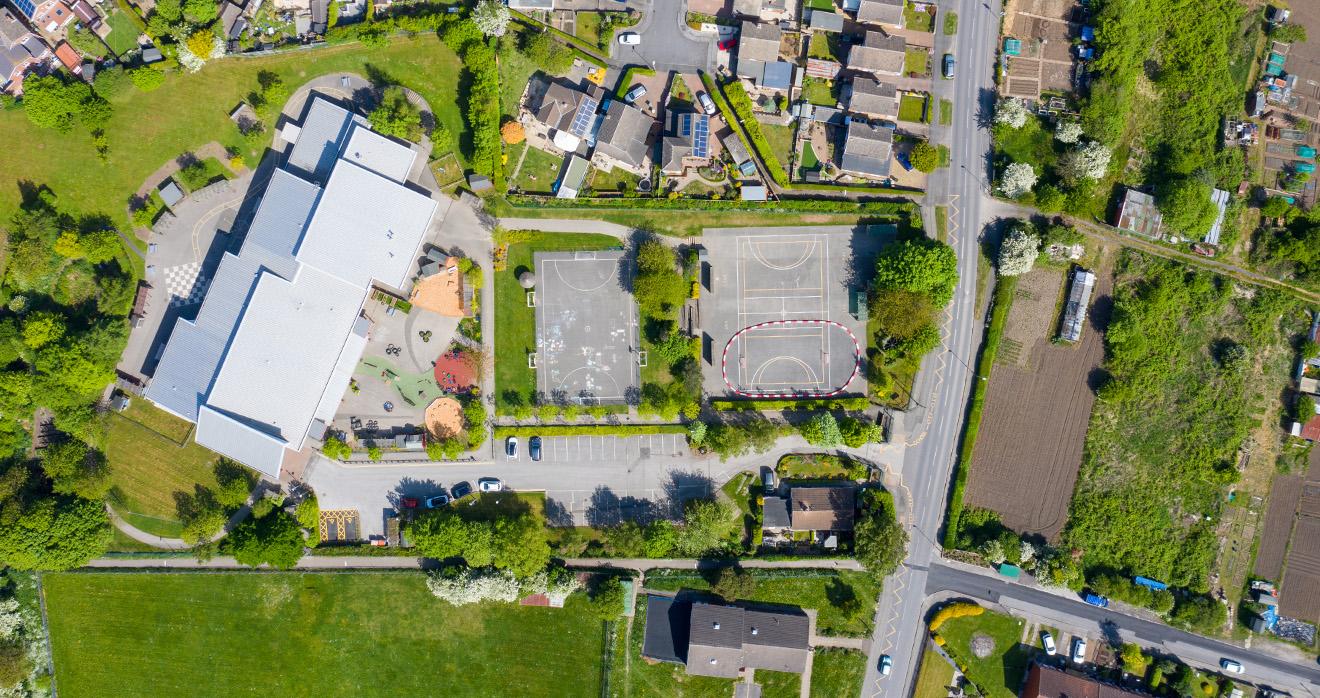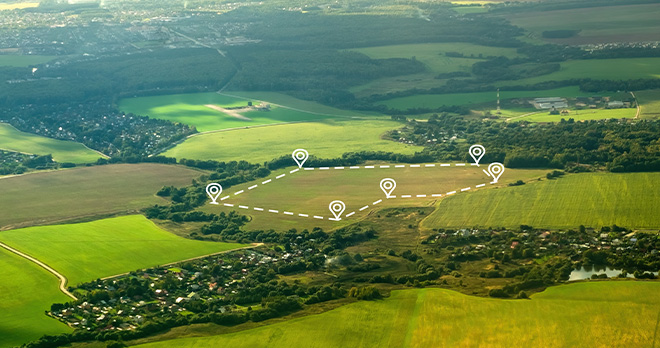A guide to ransom strips.
Partner Peter Foskett in our real estate team explains the value of owning a ‘ransom strip’, calculating and structuring payments by the developer, and the practical steps you should take to realise the financial potential of your ransom strip.
What is a ransom strip?
Normally, a ransom strip is a piece of land that must be crossed to enable adjoining land to be developed. “Crossed” means by way of a right of way, but also often includes laying services beneath the land too. Sometimes a ransom strip can simply be the right to connect into the services or a roadway on adjoining land.
What you need to know, if you own a ransom strip?
Owning a ransom strip is valuable because ownership means that you do not have to reach an agreement with the landowner or developer wishing to develop the adjoining land; in the absence of an agreement, the adjoining land will not be developed. In practice, deals get negotiated, since usually a party with the ransom strip is keen to receive a payment. However, occasionally the owner of the ransom strip can be so opposed to the development that no financial inducement will ever be agreed.
If you are the owner of a ransom strip, then it is essential that the person seeking to develop the adjoining land (i) is aware that there is a ransom strip, and (ii) knows whom to contact to reach a financial settlement. Otherwise the onus passes from the developer needing to agree a deal with you as the owner of the ransom strip to you seeking compensation for the rights that have been unlawfully exercised over your ransom strip. This shift in the balance of power is very detrimental to you.
Establishing ownership of the ransom strip when it is registered land is usually very easy to do – and difficult for the developer to dispute. Also, making sure that your ransom strip is registered land will normally mean the developer is aware of its existence and knows to contact you to negotiate a deal.
Does size matter?
While the actual size of the ransom strip is not a key consideration, the smaller the strip, the more important it is to make sure that a developer is aware of its existence. Because it exists, the developer will unable to develop. You are in the best negotiating position when your land is the only route available to the developer.
When and why you should create a ransom strip?
You can create a ransom strip when disposing of land. If you think the land, or any land adjoining it and which is or may be accessed through the land you are selling, may secure planning permission for development in the future, keeping ownership of a small section of the land along any boundaries that will form the route for access or the supply of services is a good idea. You now have your ransom strip, meaning that should development become possible in the future, the developer will need to agree terms with you to cross your ransom strip for access or to lay service media beneath it or both.
Where the ransom strip is along a side boundary, its creation is usually as simple as excluding the land from the plan attached to the transfer deed showing the land being disposed of. It is wise also to take steps to reduce the risk of ownership of the ransom strip being lost through adverse possession, commonly known as squatter’s rights. If the land is already registered land, then no action is probably necessary. If though it is unregistered, you should make a voluntary application for its first registration. This will ensure that you cannot lose ownership without your knowledge and opportunity to prevent it. You only risk losing ownership if you fail to take action.
Where the potential ransom strip is across the front of the site, creating it is more difficult – but still possible – as rights will need to be granted for access and possibly services. Right can, however, be expressly limited to the current use. Overage may be an alternative approach.
How much money do you get for owning a ransom strip?
When people talk about a payment for access across a ransom strip they generally refer to three key judgements.
There are specific factors relating to each of these decisions, but when reviewed together they provide a very good and sound basis for you to know how to reach a negotiated settlement.
There are two stages to the calculation:
Stage 1
The first is to calculate the increase in value of the developer’s land should it be able to develop the land.
To calculate the Increase in Value the general formula is as follows:
- the value of the developer’s land as developed – this assumes the actual nature of development is fixed
- the developer’s intended profit from the development – the level of profit will include an element to reflect the risk which the developer is taking. The greater the risk, then commercially a greater profit percentage will normally be expected. Conversely the less the risk (e.g. planning permission has already been granted), the lower the profit percentage.
- The cost of construction including the laying the necessary infrastructure to enable the development to happen as well as the development itself.
As well as legal input, you also need to take the advice of an experienced surveyor.
The Increase in Value to be shared is the value of land as developed less:
- the developer’s profit
- the cost of construction
- the land’s current value
Stage 2
In the second calculation, you need to use the resulting Increase in Value figure to calculate how much of that Increase in Value is to be paid to you as the ransom strip owner.
In Amec Developments Ltd v Jury’s Hotel Management (UK) Limited, the court set out eight principles, not all of which are of direct relevance but most of which are:
- the overall principle is that the court must attempt to find what would be a “fair” result of a hypothetical negotiation between the parties
- the context, including the nature and seriousness of the breach, must be kept in mind
- the right to prevent development (or part) gives the owner of the right a significant bargaining position
- the owner of the right with such a bargaining position will normally be expected to receive some part of the likely profit from the development (or relevant part)
- if there is no evidence of the likely size of profit, the court can do its best by awarding a suitable multiple of the damages for loss of amenity
- if there is evidence of the likely size of profit, the court should normally take into account a fair percentage of the profit
- the size of the award should not, in any event, be so large that the development (or relevant part) would not have taken place had such a sum been payable
- after arriving at a figure that takes into consideration all the above and any other relevant factors, the court needs to consider whether “the deal feels right”.
What guidance does this give you?
Even if there is no fixed scheme of development, you can reach a settlement can be reached. Safeguards in such a situation will though also be required.
Also after all the mathematics, comparable evidence, disputes about construction costs and eventual profit, there is a reality check. Is the developer achieving an unfair windfall or are you killing the goose that lays the golden egg by asking for too much of the profit?
Most importantly of all, leaving aside the factors that are particular to the specific negotiations, one-third of the increase in value be paid to you as the owner of the ransom strip will normally be seen as a fair percentage and meeting the reality check.
Payments by the developer
The normal situation is for a fixed sum to be agreed and paid to you in exchange for completing a deed granting rights over your ransom strip land. If that is the case, then you should ensure that the wording of the rights granted (or modification) relates specifically to the form of development in respect of which the payment has been calculated, negotiated and agreed. You should ensure that having made a payment to you based upon an assumed value of the developed land, the developer does not then actually proceed with a more valuable form of development. This is why it is better to retain ownership.
If the proposed development cannot be scoped in sufficient detail, then a more imaginative approach will need to be taken. Possible approaches are:
- to have a best guess at the form and density of development, agree a figure for that and provide a mechanism for a further payment if the actual development differs from the best guess. The developer may want this approach also to allow for a refund.
- rather than agree a figure to be paid, to agree the percentage of the Increase in Value that is to be paid to you once the planning permission has been obtained and the mechanism to calculate this. In this situation, you should consider whether to require a minimum payment so that there is a guaranteed figure for release.
Timing of payments
The issue for a developer is the need to secure both planning permission for development and agreement with you as the owner of the ransom strip. It knows that your negotiating position is enhanced if it has already obtained planning permission. Consequently, it will want to agree terms with you in advance of obtaining planning permission. This then leads to the question of when you will be paid. If the developer wants to complete the release of the ransom strip ahead of obtaining planning permission (or it has obtained planning permission), then you should require it to pay the agreed sum at that time. You should also allow for a subsequent change in the style of development as discussed above.
You should not agree to receive the payment in stage payments as the development is built out unless the developer is willing to pay you more to reflect the sharing of risk.
If the developer does not want to pay the full sum in advance, then you should refuse to complete the release. Instead you can enter into an agreement to release the ransom strip in the future for the agreed sum; in this case you should require the developer to pay you a sum (effectively an option fee) up front.
Your costs
You should expect the developer to meet all your costs in entering into such an agreement with it. This is regardless of whether or not it is successful in its development plans. If the developer is not willing to do so, as it fears that the potential for securing planning permission is low, then it should obtain the planning permission first and then return to negotiations with you.
Practical steps for ransom strip owners
Have you been approached by a developer? Consult our specialist Real Estate team before you continue discussions.
No interested developer yet? Here’s how our specialist Real Estate can help you secure future success:
- We can check whether your ransom strip is registered and if it is, that your details are correctly recorded.
- We can register what is known as a ‘Property Alert’ against the property that you hope will be developed. This way, when a developer enters into a contractual arrangement with that landowner and registers some form of notice at H. M. Land Registry to protect that contract, H. M. Land Registry will notify us. You will then be on notice that things are beginning to happen with the adjoining land and be on the front foot when you receive an approach from a developer.
News and insights from our legal specialists
View more articles related to Real Estate











